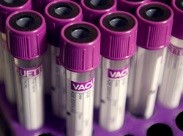Laboratory Information for Chemical Emergencies
As lab personnel, you play a crucial role in response to chemical emergencies by collecting, packaging, and shipping specimens to confirm potential chemical exposures. Read on for more information about how to respond safely and effectively during a chemical emergency.

Collect Specimens.
Following a chemical exposure incident, collect blood and urine samples for each adult involved. For children, only collect urine samples unless the CDC says otherwise. View this flowchart for directions on how to collect blood and urine samples from potentially exposed individuals:
Package and Ship Specimens.
After collecting the samples, package and ship them to the appropriate laboratory destination based on your state’s chemical exposure comprehensive response plan. Follow the CDC’s instructions for how to package and ship specimens found on this website.
To request a copy of the Specimen Collection and Shipping Manifest form for urine and blood specimens, please contact the Emergency Response Branch’s Incident Response Laboratory at IncidentResponse@cdc.gov. Remember, blood tubes and urine cups cannot be shipped together in the same package.
Ask Questions.
Visit the Morbidity and Mortality Weekly Report (MMWR) website for a list of public health contacts for laboratory testing to confirm exposure during a potential or known chemical emergency.
The CDC Information Line is another important source of information. For more questions, call 800-CDC-INFO (800-232-4636) or send an email here.
Incident Response Laboratory
Emergency Response Branch
Division of Laboratory Sciences
National Center for Environmental Health
IncidentResponse@cdc.gov
